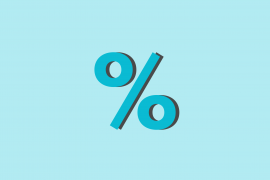Decisiveness = success
Why is it that one individual or company has more or less success than others in the design industry? Talent certainly has something to do with it along with enthusiasm. But I think business management skills and marketing are more crucial. Over recent years I have noticed a number of very talented, enthusiastic designers bail out of the industry because they have burnt out. To my mind this is because they did not have a decision making process that would allow them to examine where they were heading and how to take the tough decisions before it gets too late and the decision is made for them.
Because we are in a creative field with so many intangible components there is a lack of definition and a great deal of subjectivity. Every new concept involves a risk of challenge and criticism. We all have clients ignorant of our processes, they have no way to value our efforts and they cannot evaluate and respond to design in constructive terms. On top of this we have all of the normal business management issues from staff to bookkeeping. Few of us have any training in how to handle all of these issues.
In the past, we have had the luxury of working with a business mentor – I call him ‘the chairman’. He has had more than 50 years experience in the business world. He once told me his theory about making business decisions. It is summed up in one word.
Schwerpunktstreik
Roughly translated from German this means ‘selective strike on the centre of focus with maximum force’.
He explains his theory thus; weigh up all of the factors carefully after gathering all of the facts and then you make a rapid, precise decision and execute it immediately.
My chairman also recently introduced me to the opposite term; paralysis by analysis. The term was first used by Harold Geneen, the CEO of ITT Corporation. During his 18-year tenure, Harold raised sales from $700 million to $17 billion, and profits from $29 million to $550 million.
Paralysis by analysis occurs when we spend so much time gathering so much information that we are not able to make a decision because we are forever analysing the information. The skill is in working out when you have just enough information to make a decision.
So how do you decide?
The basic old pros and cons has been developed further by Edward DeBono in his book Creative Thinking. DeBono calls this PMI: ‘Plus/Minus/Implications’.
PMI is an important decision-making tool because it helps check that a decision is going to improve the situation (it may actually be best to do nothing!) PMI is a useful tool for doing this.
To use PMI, draw up a table headed up with: ‘Plus’, ‘Minus’, and ‘Implications’. In the column underneath ‘Plus’, write down all the positive results of taking the action. Underneath ‘Minus’ write down all the negative effects. In the ‘Implications’ column write down the implications and possible outcomes of taking the action, whether positive or negative. By this stage it may already be obvious whether or not you should implement the decision. If it is not, consider each of the points you have written down and assign a positive or negative score to it appropriately. The scores you assign may be quite subjective.
Once you have done this, add up the score. A strongly positive score shows that an action should be taken, a strongly negative score that it should be avoided.
Now use Schwerpunktstreik.
Article republished with permission from dmzine
Photo: – The Streamtime European Team at the Palm Brewery Tour








